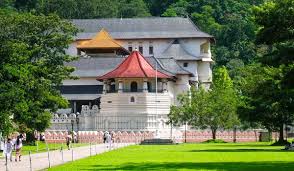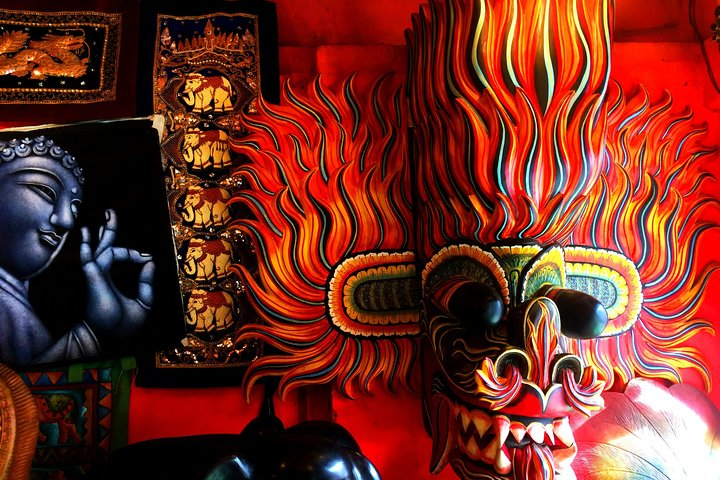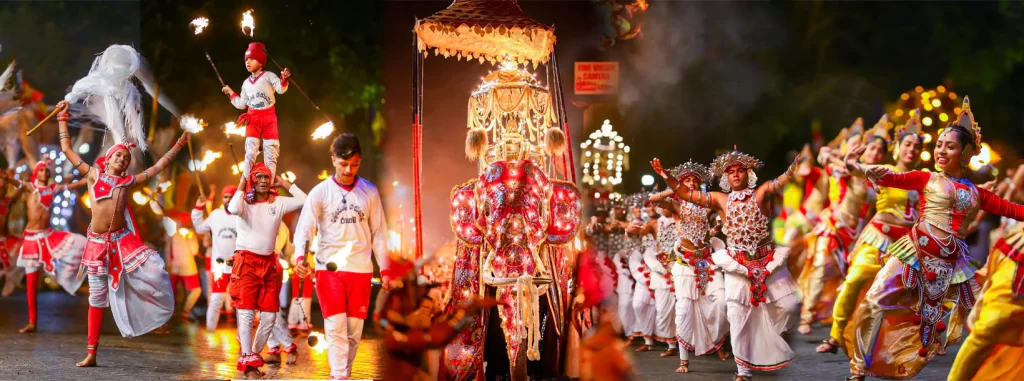Sri Lanka's Cultural Heritage: A Journey Through Temples, Traditions, and Ancient Ruins
Sri Lanka, a land rich in culture, history, and spirituality, offers travelers a unique opportunity to explore a vibrant heritage that spans thousands of years. The island is dotted with magnificent temples, ancient ruins, and traditions that speak to its deep-rooted Buddhist culture. From the sacred city of Kandy to the ancient capitals of Anuradhapura and Polonnaruwa , Sri Lanka is a treasure trove for those seeking to immerse themselves in its cultural wonders.

Temple of tooth relic,Kandy
In Anuradhapura, the ancient capital of Sri Lanka, stands the Sri Maha Bodhi, a sacred tree that is believed to be a sapling from the original tree under which Buddha attained enlightenment. The Sri Maha Bodhi is one of the oldest living trees in the world, dating over 2,300 years. It is a place of great devotion, where pilgrims from around the globe come to pay their respects. The Ruwanwelisaya Stupa, another sacred site in Anuradhapura, is an awe-inspiring stupa built by King Dutugemunu in the 2nd century BCE. It is one of the largest and most significant stupas in Sri Lanka, symbolizing the island’s devotion to Buddhism.
Ancient Ruins and Lost Cities
Sri Lanka’s ancient cities, once thriving capitals, are a testament to the island’s grandeur during its early civilizations. Sigiriya, a UNESCO World Heritage Site, is perhaps the most iconic of these ancient ruins. Known as the “Lion’s Rock,” Sigiriya was the royal palace of King Kassapa, built atop a massive rock. Visitors must climb the rock’s steep sides, but the panoramic views from the top and the fascinating frescoes and ruins make the effort worthwhile. Sigiriya’s history and beauty are a compelling reason to visit, as it offers a glimpse into the island’s past splendor

Not far from Sigiriya lies Polonnaruwa, another UNESCO-listed city that served as the capital of Sri Lanka from the 11th to the 13th century. The ruins of Gal Vihara in Polonnaruwa are remarkable for their giant rock-carved Buddha statues, which demonstrate the island’s exceptional craftsmanship and devotion. The Vatadage and Lankatilaka Vihara, ancient Buddhist temples in Polonnaruwa, showcase architectural brilliance and historical importance

Beyond the temples and ruins, Sri Lanka’s traditional arts and crafts are an essential part of the island’s cultural heritage. The art of mask-making is one of the most intriguing traditions. In the coastal town of Ambalangoda, visitors can explore the Mask Museum, where centuries-old techniques for creating vibrant, carved masks are still practiced today. These masks are used in traditional dances, particularly the Kohomba Kankariya, a dance ritual meant to heal the sick.
Kandy, another cultural hub, is famous for its traditional batik fabrics and intricate silver jewelry, which can be found in local markets and shops. Sri Lanka’s handloom weaving tradition also dates back centuries, producing vibrant textiles that tell the stories of the island’s culture and history.
Sri Lanka’s festivals are a vivid display of its cultural heritage. The Kandy Esala Perahera is undoubtedly the most famous, celebrated in honor of the Tooth Relic. This grand festival brings together music, dance, and the iconic sight of decorated elephants parading through the streets. The Vesak Festival, which celebrates the birth, enlightenment, and death of Buddha, is another significant cultural event, with temples across the island beautifully lit up with lanterns and decorations.

Sri Lanka’s cultural heritage is an enchanting blend of ancient temples, sacred relics, and living traditions. From the grandeur of the Temple of the Tooth Relic in Kandy to the ancient ruins of Sigiriya and Polonnaruwa, . These destinations remain at the core of srilankan tourism, attracting travelers from around the world eager to explore the island’s heritage . Whether you’re wandering through ancient cities, paying homage at sacred sites, or experiencing local crafts and festivals, Sri Lanka offers an unforgettable journey through Sri Lankan tourism.

